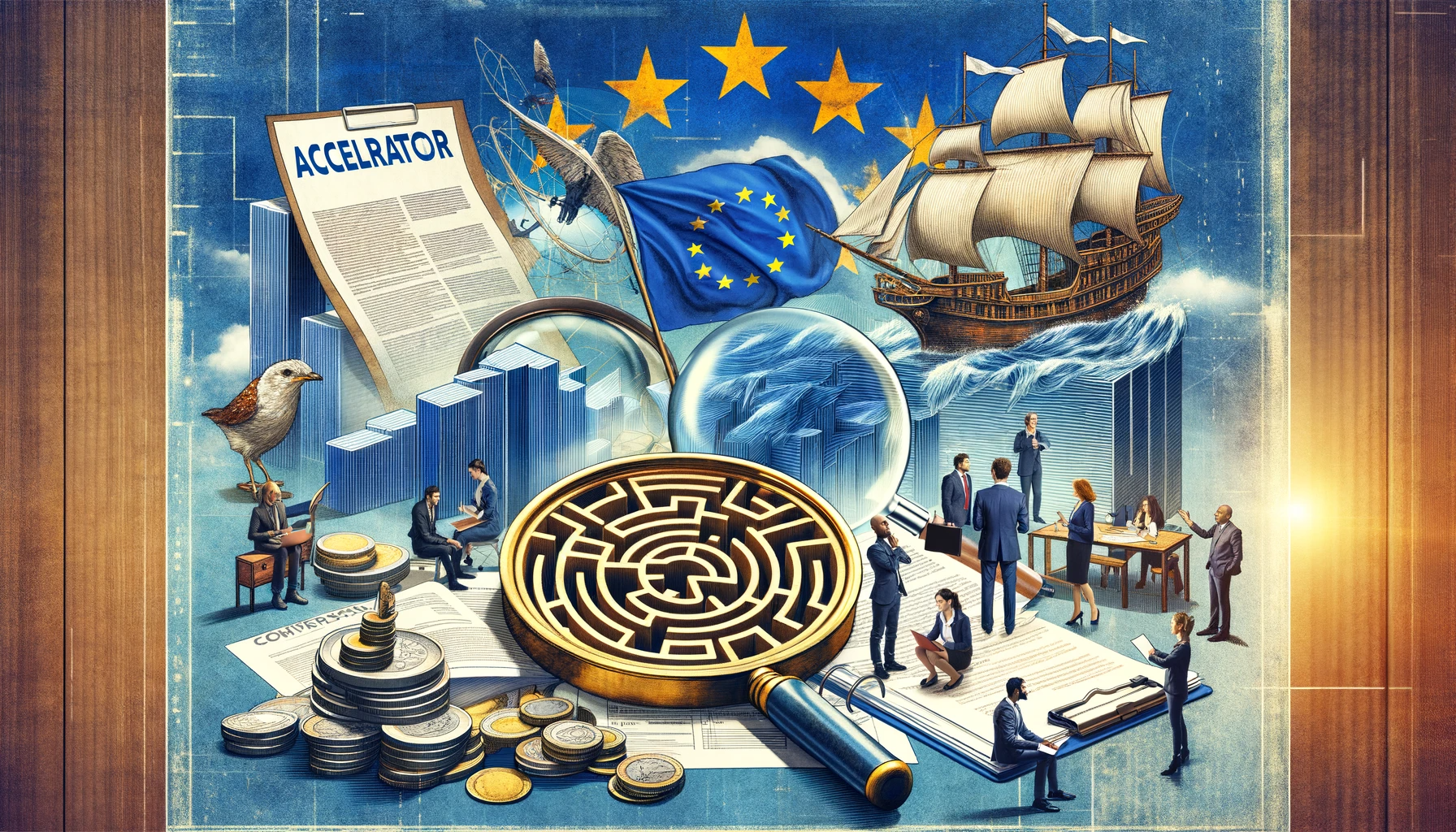EIC Accelerator: Empowering Breakthrough Innovations with Exciting Funding Opportunities!
Discover the Opportunities with the EIC Accelerator: Igniting Innovation and Growth! Discover a world of opportunity with the EIC Accelerator, an empowering funding program brought to you by the European Innovation Council (EIC), a key player within the Horizon Europe framework. This dynamic initiative is dedicated to uplifting innovative companies that are at the forefront of technological breakthroughs and scientific discoveries in the DeepTech domain. With the EIC Accelerator, your visionary project could secure up to €2.5 million in grant funding, complemented by the potential of an additional €15 million in equity financing. Let’s propel your pioneering ideas into tangible successes and shape the future together! Explore the Exciting Range of Technologies Eligible for EIC Accelerator Funding! Since its inception in 2021, the EIC Accelerator has proudly empowered a dynamic portfolio of over 400 beneficiaries, showcasing a vibrant tapestry of sectors from trailblazing capital-intensive hardware to revolutionary pure software ventures, all with an emphasis on the cutting-edge realm of DeepTech. With open arms, the EIC Accelerator embraces a wide array of technological innovations, provided they harmonize with EU policies, steering clear of military applications among others. What’s more, the EIC Accelerator annually spotlights certain pioneering technologies with its Technology Challenges, celebrating and accelerating the drive towards a brilliant, tech-forward future. Discover the Ideal Technology Maturity Level for EIC Accelerator Success! Elevate your innovative technology to new heights with the support of the EIC Accelerator! If your technology is at or beyond Technology Readiness Level (TRL) 5, where it has already been validated in a relevant environment, you’re in an excellent position to apply. The EIC Accelerator champions the advancement of prototypes and proof-of-concept demonstrations, actively seeking to propel your breakthroughs from TRL 5 onwards. And that’s not all! The journey continues seamlessly with grant opportunities available for technologies that have achieved TRL 6 or 7, ensuring a smooth progression towards market readiness. For those outstanding innovations that have matured to TRL 8, the EIC Accelerator offers the unique prospect of pure Equity investments. Get ready to accelerate your technology with the dynamic and supportive backing of the EIC Accelerator! Explore the Exciting Funding Opportunities with the EIC Accelerator! Welcome to the dynamic world of the EIC Accelerator, where we supercharge innovative companies with a suite of funding options tailored to propel your business to the forefront of your industry! Dive into our generous Grants of up to €2.5 million to kick-start your ventures without giving up equity. Or, if you’re looking to bolster your growth with a significant capital injection, explore our Equity option with investments of up to €15 million, where the EIC Fund becomes a proud stakeholder in your success. Can’t choose between the two? Our Blended Finance combines the best of both worlds, offering up to €17.5 million in funds, ensuring you have the flexibility and resources to scale new heights. Choose the type and amount of funding that aligns perfectly with your company’s ambitions, and in those extraordinary instances where your vision requires an even broader financial canvas, we’re ready to discuss larger funding opportunities. With the EIC Accelerator, your business potential knows no bounds! Unleash Your Innovation: Start Your Applicant Journey! Discover the Trailblazers: Celebrating Recipients of EIC Accelerator Funding! Get ready for a thrilling opportunity with the EIC Accelerator! If you’re a dynamic for-profit company registered in one of our designated eligible countries, you’re in the right place to fuel your innovation and growth. But that’s not all – visionary individuals and forward-thinking investors are also warmly invited to join the ride! Just make sure you set up your company before the ink dries on the Grant Agreement Contract. Your enterprise should be an independent Small and Medium-sized Enterprise (SME), characterized by a vibrant team of fewer than 250 people, and robust financial health with a turnover of €50 million or less and a balance sheet total that doesn’t exceed €43 million. Come aboard and let the EIC Accelerator propel your business to new heights! Discover the Exciting Opportunities: All EU Countries Welcome to Apply for the EIC Accelerator! The EIC Accelerator presents an exciting opportunity for innovative companies and entrepreneurs across the entire EU-27, including Austria, Belgium, Bulgaria, Croatia, Republic of Cyprus, Czech Republic, Denmark, Estonia, Finland, France, Germany, Greece, Hungary, Ireland, Italy, Latvia, Lithuania, Luxembourg, Malta, Netherlands, Poland, Portugal, Romania, Slovakia, Slovenia, Spain, and Sweden, as well as their respective territories. This vibrant platform offers a gateway for visionaries from all corners of the EU to bring their groundbreaking ideas to the forefront and drive Europe’s innovation landscape into a bright and dynamic future! Discover How International Innovators Can Join the EIC Accelerator Adventure! We’re thrilled to announce that through our association agreements with Horizon Europe, a world of opportunities has been unlocked for companies and individuals in an impressive array of countries! If you’re based in Albania, Armenia, Bosnia and Herzegovina, the Faroe Islands, Georgia, Iceland, Israel, Kosovo, Moldova, Montenegro, North Macedonia, Norway, Serbia, Tunisia, Turkey, Ukraine, Morocco, or the United Kingdom (Grant only), get ready to bring your innovative ideas to life with the EIC Accelerator. This is your chance to join a vibrant community of forward-thinkers and game-changers. Apply now and let’s shape the future together! Discover How the EIC Accelerator Can Propel Your Innovation Journey! Discover Your Potential: Unveiling Success Stories with the EIC Accelerator! Embark on an exciting journey with the EIC Accelerator, where every application is an opportunity to shine! While we cherish the competitive spirit, exact success rates for each of our three dynamic evaluation steps remain a well-kept surprise. Nevertheless, it’s estimated that a dazzling 5% of applicants or more move triumphantly from Step 1 to Step 3, demonstrating true innovation and potential. Keep in mind, success rates may soar depending on the EIC Accelerator’s annual budget and the spirited number of applications for each call-off. Plus, whether it’s an Open Call or tailored to Challenges, the chances to succeed can vary, highlighting that with the right idea and excellent execution, your project … Read more











